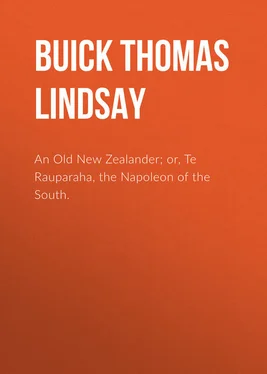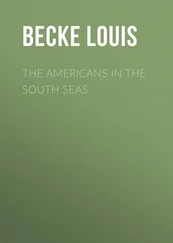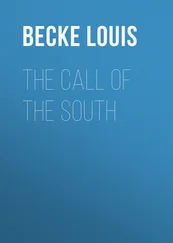Thomas Buick - An Old New Zealander; or, Te Rauparaha, the Napoleon of the South.
Здесь есть возможность читать онлайн «Thomas Buick - An Old New Zealander; or, Te Rauparaha, the Napoleon of the South.» — ознакомительный отрывок электронной книги совершенно бесплатно, а после прочтения отрывка купить полную версию. В некоторых случаях можно слушать аудио, скачать через торрент в формате fb2 и присутствует краткое содержание. Жанр: foreign_antique, foreign_prose, на английском языке. Описание произведения, (предисловие) а так же отзывы посетителей доступны на портале библиотеки ЛибКат.
- Название:An Old New Zealander; or, Te Rauparaha, the Napoleon of the South.
- Автор:
- Жанр:
- Год:неизвестен
- ISBN:нет данных
- Рейтинг книги:3 / 5. Голосов: 1
-
Избранное:Добавить в избранное
- Отзывы:
-
Ваша оценка:
- 60
- 1
- 2
- 3
- 4
- 5
An Old New Zealander; or, Te Rauparaha, the Napoleon of the South.: краткое содержание, описание и аннотация
Предлагаем к чтению аннотацию, описание, краткое содержание или предисловие (зависит от того, что написал сам автор книги «An Old New Zealander; or, Te Rauparaha, the Napoleon of the South.»). Если вы не нашли необходимую информацию о книге — напишите в комментариях, мы постараемся отыскать её.
An Old New Zealander; or, Te Rauparaha, the Napoleon of the South. — читать онлайн ознакомительный отрывок
Ниже представлен текст книги, разбитый по страницам. Система сохранения места последней прочитанной страницы, позволяет с удобством читать онлайн бесплатно книгу «An Old New Zealander; or, Te Rauparaha, the Napoleon of the South.», без необходимости каждый раз заново искать на чём Вы остановились. Поставьте закладку, и сможете в любой момент перейти на страницу, на которой закончили чтение.
Интервал:
Закладка:
It is probable that in some such way the first canoes reached New Zealand, for it is known that individual vessels had visited these shores long before the historic migration known as "the fleet" left Rarotonga in or about the year 1350 a. d. The stories brought back by these pioneering mariners excited the cupidity and fired the imagination of the islanders, and when a fleet of several great canoes arrived at Rarotonga, and found that group already fully occupied, they decided to set out in search of the strange land which had been dragged from the depths of the sea by the miracle-working Maui, and discovered by the great sea-captain Kupe. 4 4 The knowledge which the Polynesians possessed of the Southern sea, and their skill as navigators, was such that when "the fleet" set out from Rarotonga, they did not go to discover New Zealand, but they went with the absolute certainty of finding it.
Here they hoped to capture the giant bird, the flesh of which Ngahue had preserved and brought back with him, but more than all they were eager to enrich themselves by the possession of the toka-matie , or much prized greenstone, the beauty of which they had heard so much extolled.
The story of this migration is recorded amongst the classic traditions of the New Zealanders: how the Arawa canoe came perilously near being lost in a tempest, and descended into the mysterious depths of the whirlpool, Te Parata; how the crew of the Taki-tumu suffered the pangs of starvation; how the Kura-haupo suffered wreck; and how, on landing, the crew of the Arawa practised the deceit upon the sleeping Tainui of placing the cable of their canoe under that of the latter, in order that they might, with some hope of success, set up a claim to first arrival. One by one the canoes reached these shores, the major part of them making land in the vicinity of East Cape, thence sailing to the north or to the south, as the whim of the captain or the divination of the tohunga decided their course. In this way they spread to almost every part of the North Island, which they found already peopled with the remnants of prior migrations, who were living in peaceable possession. With these the warlike Vikings from the Pacific fought and contended until they gained undoubted supremacy, thus giving a starting-point to New Zealand history by establishing ancestral lines from which all Maoris love to trace their descent. These tribes soon became the dominant power in the land. The weaker tangata whenua 5 5 "Man of the land, native, aboriginal." Probably these people were a mixture of the Melanesian and Polynesian types.
were subdued and absorbed. Their traditions, arts, and customs disappeared, except in so far as they may have unconsciously influenced those of their conquerors. The latter grew in strength and numbers, extending their influence far and wide, as they marched towards the development of their national existence and their final consolidation into the Maori race.
Unto these people was born, about the year 1768, a little brown babe who was destined to become the great Te Rauparaha, chief of the Ngati-Toa tribe.
CHAPTER II
ARAWA AND TAINUI
If the genealogies of the Maori race can be relied upon, it may be accepted as a fact that the immediate ancestors of Te Rauparaha came to New Zealand in the canoe Tainui, which is said to have been the first vessel of the fleet after the Arawa, prepared for sea. By an unfortunate circumstance there sprang up between the crews of these two canoes a fatal rivalry, which repeated acts of aggression and retaliation were continually fanning into open ruptures, even after they had landed and were widely separated on the shores of New Zealand. This ill-humour, according to the tradition, was first engendered by Tama-te-kapua, the chief of the Arawa, depriving the Tainui of her high priest, Ngatoro-i-rangi, by inviting that renowned tohunga on board his vessel for the purpose of performing some of the all-important ceremonies which the complex ritual of the Maori demanded on such occasions, and then slipping his cable and putting to sea before the priest had time to realise that he had been deliberately led into a trap. But this act of treachery on the part of the bold and unscrupulous captain cost him dear, and bitterly must he have repented before the voyage was over his trifling with the dignity of so consummate a master of magic as Ngatoro-i-rangi. But that story belongs to the voyage of the Arawa. Of the voyage of the Tainui, under Hoturoa, we know little; but presumably she had a comparatively uneventful passage until she touched land at a point near the north-east end of the Bay of Plenty, which her people named Whanga-poraoa, for the reason that there they found a newly stranded sperm-whale. But scarcely had they disembarked than a dispute arose between them and the Arawas, who had beached their canoe at a spot close by, as to the ownership of the carcase. The result of the debate was an agreement, arrived at on the suggestion of a Tainui chief, 6 6 On this occasion Hotu-nui is credited with having addressed his people in the following terms: "Friends, hearken! Ours was the first canoe to land in New Zealand before any of you had arrived here. But let this be the proof as to which of our canoes landed first. Let us look at the ropes which the various canoes tied to the whale now before us, and also let us look at the branches of the trees which each have put up in building an altar, then the owners of the rope which is the driest and most withered, and of the altar the leaves of which are the most faded, were the first to land on the coast of the country where we now reside."
that the crew which had first touched land should be the acknowledged owners of the fish, and to establish the date of arrival it was further agreed that they should examine the sacred places which each had erected on the shore, and on which they returned thanks to the gods for guiding them safely across the ocean. Here the ingenuity of the Arawa people enabled them to outwit the Tainuis. While the latter had built their shrine of green wood, the followers of Tama-te-kapua had taken the precaution to dry the poles of their altar over the fire before sinking them into the sand. Precisely the same process had been applied to their hawsers, so that when the examination was made for the purpose of determining priority of arrival the Arawa temple carried with it the appearance of greater age, and the Tainuis, without detecting the trick, conceded the point and yielded the prize to their rivals.
Hoturoa then decided to make further explorations to the north, and moved off in that direction with his canoe, to be followed a few days later by the Arawa. The Tainui skirted the coast, noted and named many of its prominent features as far as the North Cape, and then, as the land terminated at this point, the canoe was put about and retraced her course as far south as Takapuna. 7 7 After the canoe left Whanga-poraoa the first stopping-place was at Whare-nga, where the crew amused themselves with various games on the beach. To mark the spot, one legend has it, they placed one large stone on top of another, while a second story has it that this monument, which is still existent and is called Pohatu Whakairi , represents one of the crew who was turned into stone. The next point of interest was Moe-hau, now known as Cape Colville. They then landed at Te Ana-Puta, where, it is said, the canoe was moored to a natural arch of rock jutting into the sea. For some reason the anchor was left at a spot between Wai-hou and Piako, and under the name of Te pungapunga (the pumice stone) is still to be seen on the coast by those who are curious enough to look for it. The course was then deflected slightly to the west, and the canoe crossed to Whaka-ti-wai and coasted along the mainland past Whare-Kawa, where, it is said, Marama, one of the wives of Hoturoa, desired to be put ashore with one of her male slaves. Here they were left, and, according to one version of the tradition, it was her misconduct with this slave which prevented the crew dragging the Tainui over the portage at Otahuhu. The canoe then went on, some accounts say, as far as the North Cape, and others seem to imply that she was shortly afterwards put about and, returning into the Hauraki Gulf, sailed past the islands of Waiheke and Motu-Korea, until land was once more made at Takapuna.
Here a halt was called, and exploring parties were sent out to ascertain if all the district promised was likely to be realised. Upon ascending one of the many hills 8 8 Now called Mount Victoria or "Flagstaff Hill."
which mark the landscape in this particular locality, the voyagers were surprised to observe flocks of sea-birds, some flying over from the westward, others wheeling with noisy flight in mid-air. To the experienced eye of the native, who had been bred on the borders of the sea, this circumstance bespoke a new expanse of water to the west. The canoe was once more launched, and on their crossing the Wai-te-mata 9 9 Waitemata may be interpreted as "the waters of volcanic obsidian," no doubt a reference to the eruptive disposition of Mount Rangitoto.
harbour a critical examination of the eastern shore revealed to the astonished visitors the fact that a narrow portage existed at the head of the Tamaki River, over the ridge of which lay another arm of the sea, apparently as wide and as deep as that which they had just entered.
Интервал:
Закладка:
Похожие книги на «An Old New Zealander; or, Te Rauparaha, the Napoleon of the South.»
Представляем Вашему вниманию похожие книги на «An Old New Zealander; or, Te Rauparaha, the Napoleon of the South.» списком для выбора. Мы отобрали схожую по названию и смыслу литературу в надежде предоставить читателям больше вариантов отыскать новые, интересные, ещё непрочитанные произведения.
Обсуждение, отзывы о книге «An Old New Zealander; or, Te Rauparaha, the Napoleon of the South.» и просто собственные мнения читателей. Оставьте ваши комментарии, напишите, что Вы думаете о произведении, его смысле или главных героях. Укажите что конкретно понравилось, а что нет, и почему Вы так считаете.











